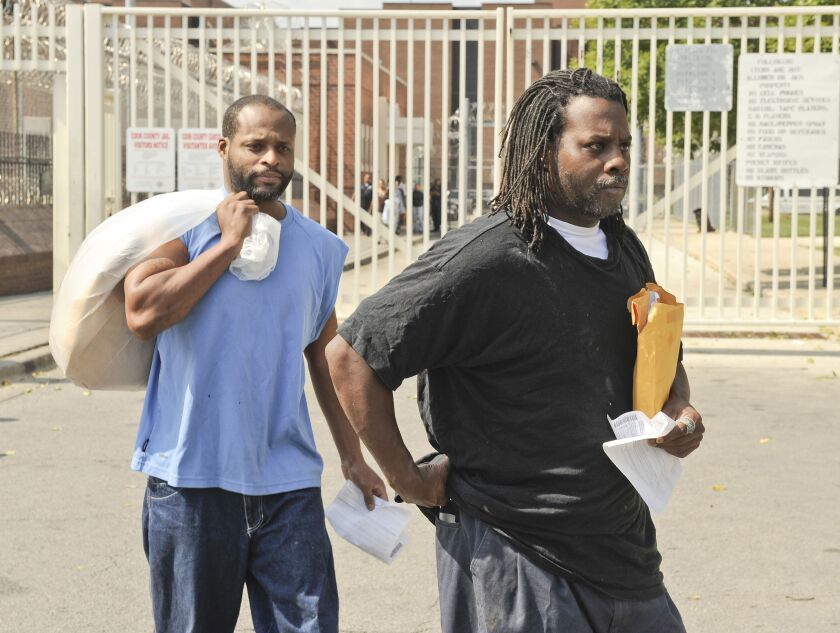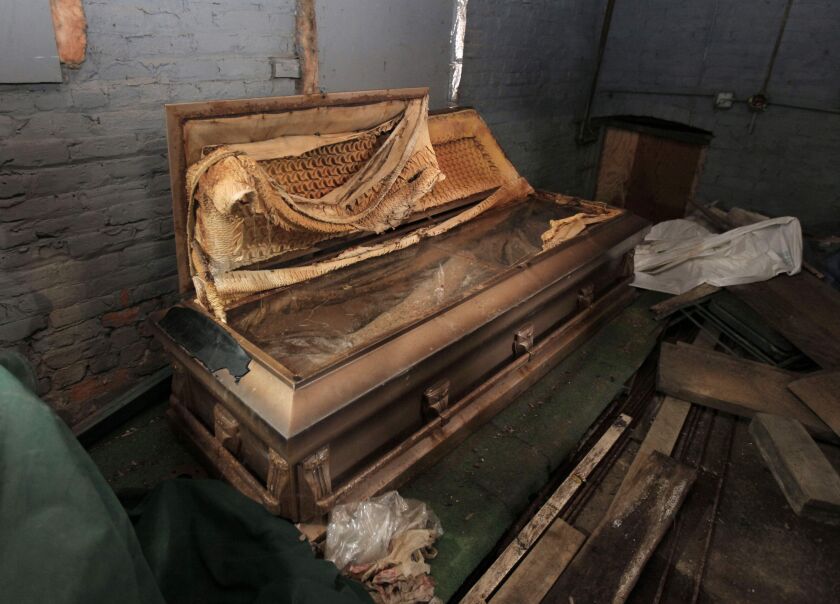The weathered bones were scattered across the weeds and hidden under grassy mounds and a mulberry bush authorities said may have been purposely planted to hide the “unthinkable.”
Other skeletal fragments — including a jaw with its teeth intact — were lying out in the open, strewn together with pieces of caskets and concrete vaults used in burials at the historic Burr Oak Cemetery.
“There were human remains all over the place,” FBI agent Douglas Seccombe testified Wednesday of the month-long excavation he spear-headed in 2009 after four cemetery workers were arrested in a grisly scheme to illegally exhume graves, dump bones and resell plots at the 150-acre Alsip site.
Two of those disgraced employees, Keith Nicks and Terrence Nicks, feared they’d be out of their jobs as space at the cemetery grew sparse, so they agreed to partake in a “cold and callous” scam that shattered the peace and tranquility of the resting place of hundreds of African-Americans, including Emmett Till, Cook County prosecutors said in their opening arguments in the brothers’ double jury trial.
The siblings, along with their co-worker — backhoe operator Maurice Dailey — allegedly took orders from Carolyn Towns, the cemetery manager who is currently serving a 12-year prison term for her crimes.
The “rogue crew began to break open graves, crush caskets, scoop human remains and dump them in the back of the cemetery with the rest of the garbage,” Assistant State’s Attorney Eric Leafblad said.
The group took advantage of the unmarked graves of the destitute whose bodies were often “double stacked” on top of each other without telling the families of those burying their loved ones, Leafblad said.
Terrence Nicks, a dump truck operator, would often act as a lookout when the bones were transferred to a grassy area known as the “dump,” prosecutor Wayne Jakalski said.
And when grounds crew supervisor Keith Nicks wasn’t directing the dismemberment and the assembling of “bogus” graves, he was an enthusiastic participant, Leafblad said.
Keith Nicks (left) and his brother Terrence Nicks are shown leaving jail in 2009. | Rich Hein/Sun-Times
Keith Nicks’ attorney, Tony Peraica, argued there was no direct evidence tying his client to the gruesome scam.
The cemetery workers expected to testify against Keith Nicks are “troubled” employees who have a vendetta against him because he once tried to discipline them for trying to scare elderly colleagues with skeletal pieces they unearthed, Peraica said.
“He’s anxious to tell the truth, and he will,” Peraica said, telling jurors that Keith Nicks, 51, is expected to take the stand at the Bridgeview Courthouse.
Defense attorney James Fryman also said 44-year-old Terrence Nicks did nothing wrong.
Seccombe said he came across more than 1,500 bones at Burr Oak. He also said he stumbled upon a skull that was in a Home Depot shopping bag.
Dailey, 64, is awaiting trial.
Investigators in 2009 found the original casket of lynching victim Emmett Till rusting in a shack at Burr Oak Cemetery. | Associated Press
Rows of tombstones are shown in 2009, lying haphazardly on the ground at Burr Oak Cemetery. | Brian Jackson/Chicago Sun-Times







